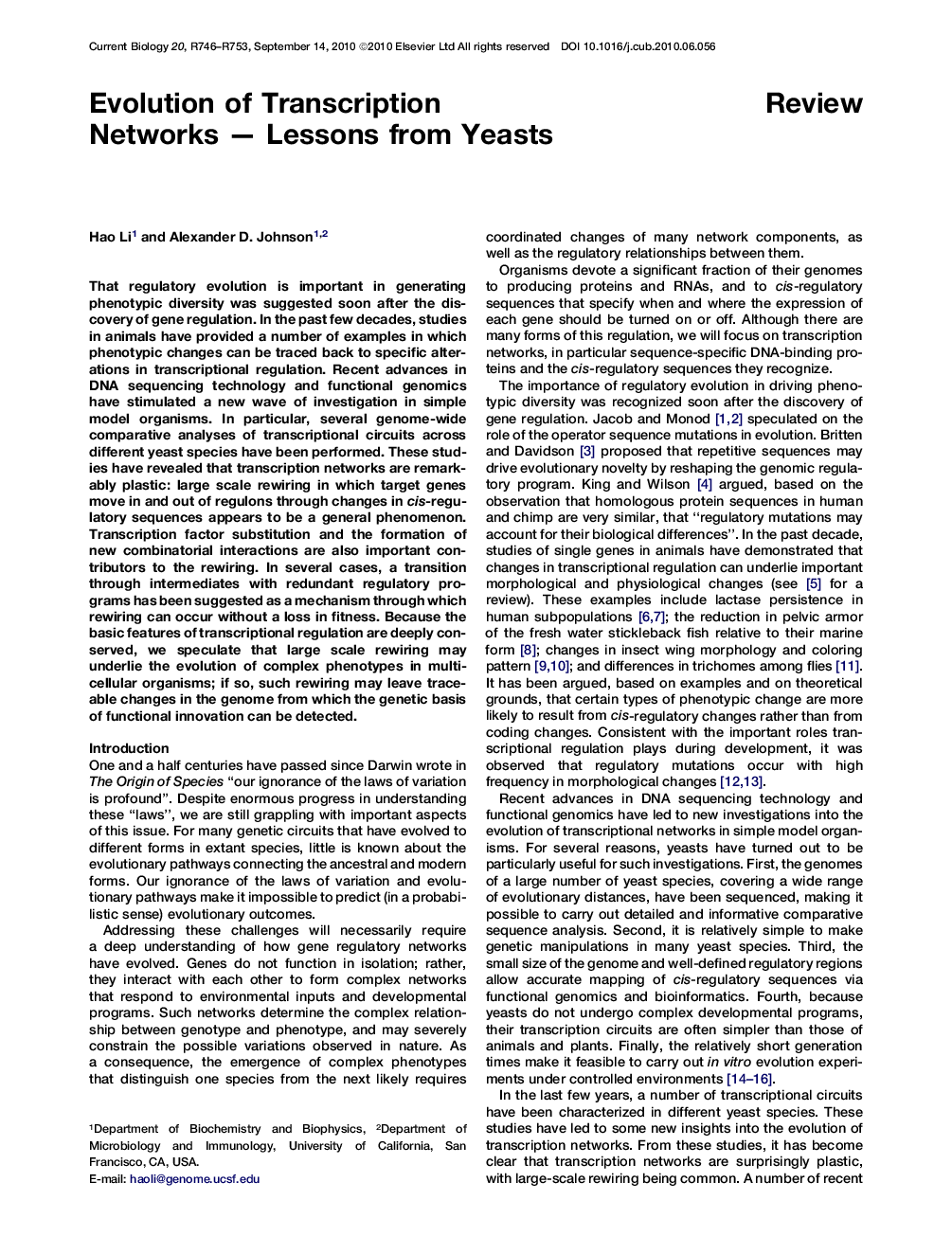| کد مقاله | کد نشریه | سال انتشار | مقاله انگلیسی | نسخه تمام متن |
|---|---|---|---|---|
| 2043420 | 1073361 | 2010 | 8 صفحه PDF | دانلود رایگان |

That regulatory evolution is important in generating phenotypic diversity was suggested soon after the discovery of gene regulation. In the past few decades, studies in animals have provided a number of examples in which phenotypic changes can be traced back to specific alterations in transcriptional regulation. Recent advances in DNA sequencing technology and functional genomics have stimulated a new wave of investigation in simple model organisms. In particular, several genome-wide comparative analyses of transcriptional circuits across different yeast species have been performed. These studies have revealed that transcription networks are remarkably plastic: large scale rewiring in which target genes move in and out of regulons through changes in cis-regulatory sequences appears to be a general phenomenon. Transcription factor substitution and the formation of new combinatorial interactions are also important contributors to the rewiring. In several cases, a transition through intermediates with redundant regulatory programs has been suggested as a mechanism through which rewiring can occur without a loss in fitness. Because the basic features of transcriptional regulation are deeply conserved, we speculate that large scale rewiring may underlie the evolution of complex phenotypes in multi-cellular organisms; if so, such rewiring may leave traceable changes in the genome from which the genetic basis of functional innovation can be detected.
Journal: - Volume 20, Issue 17, 14 September 2010, Pages R746–R753